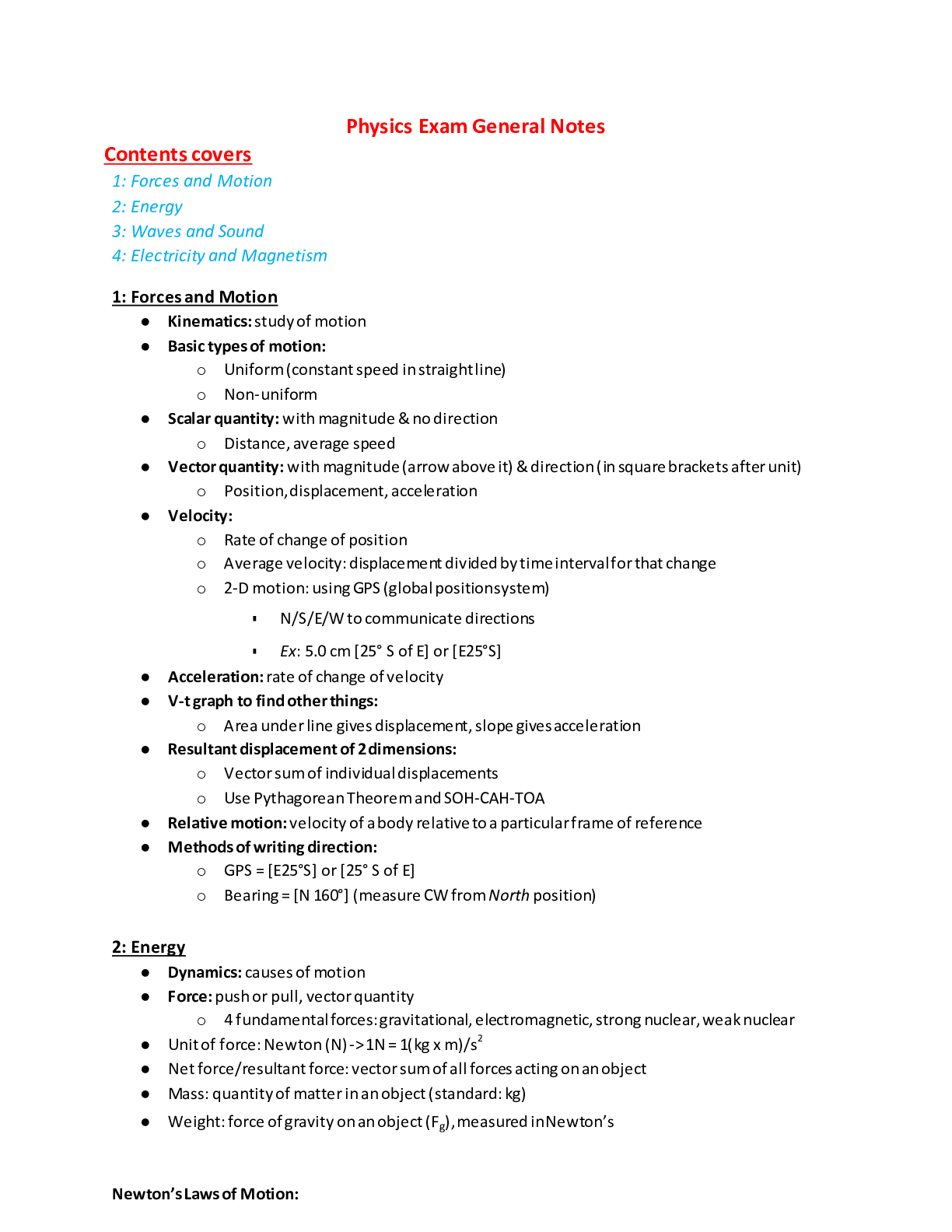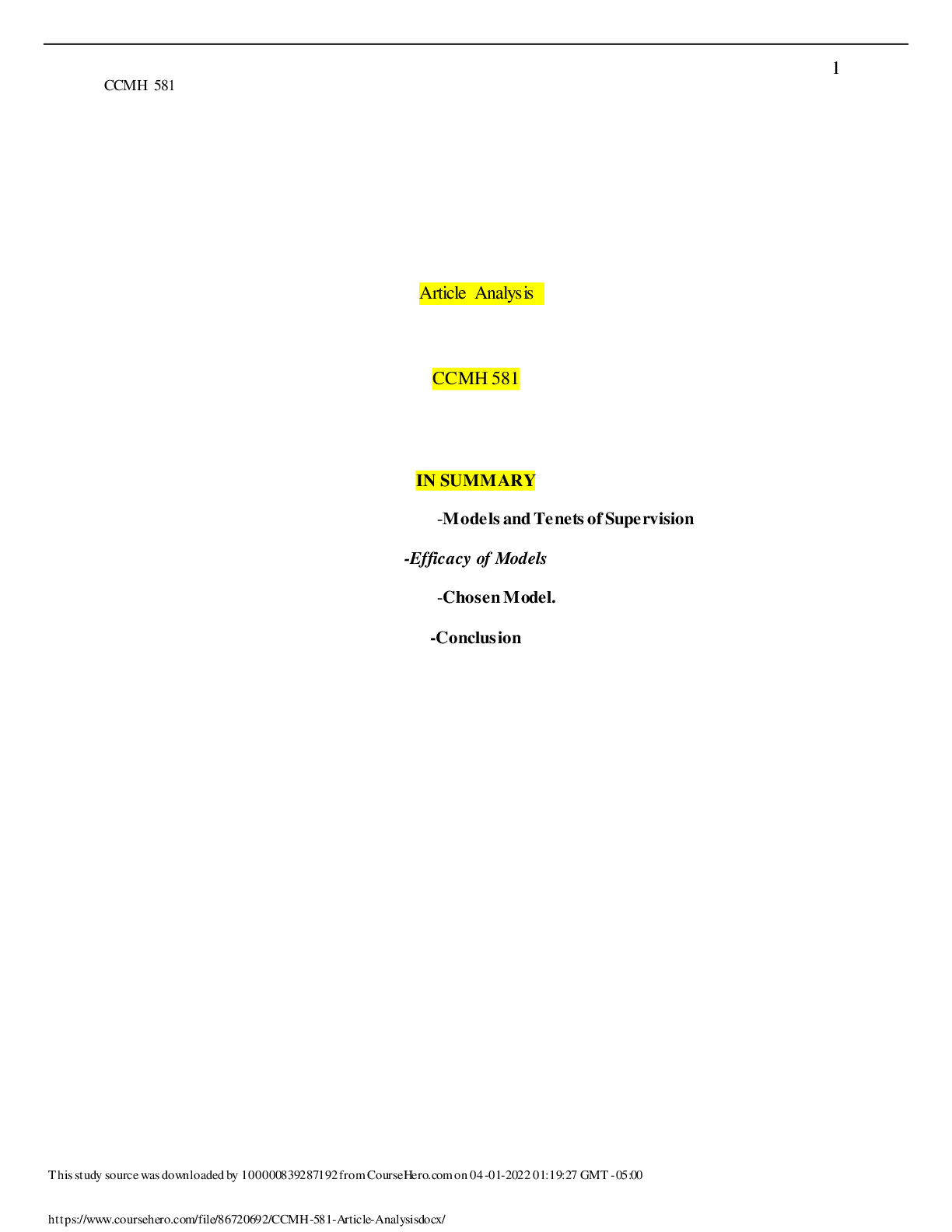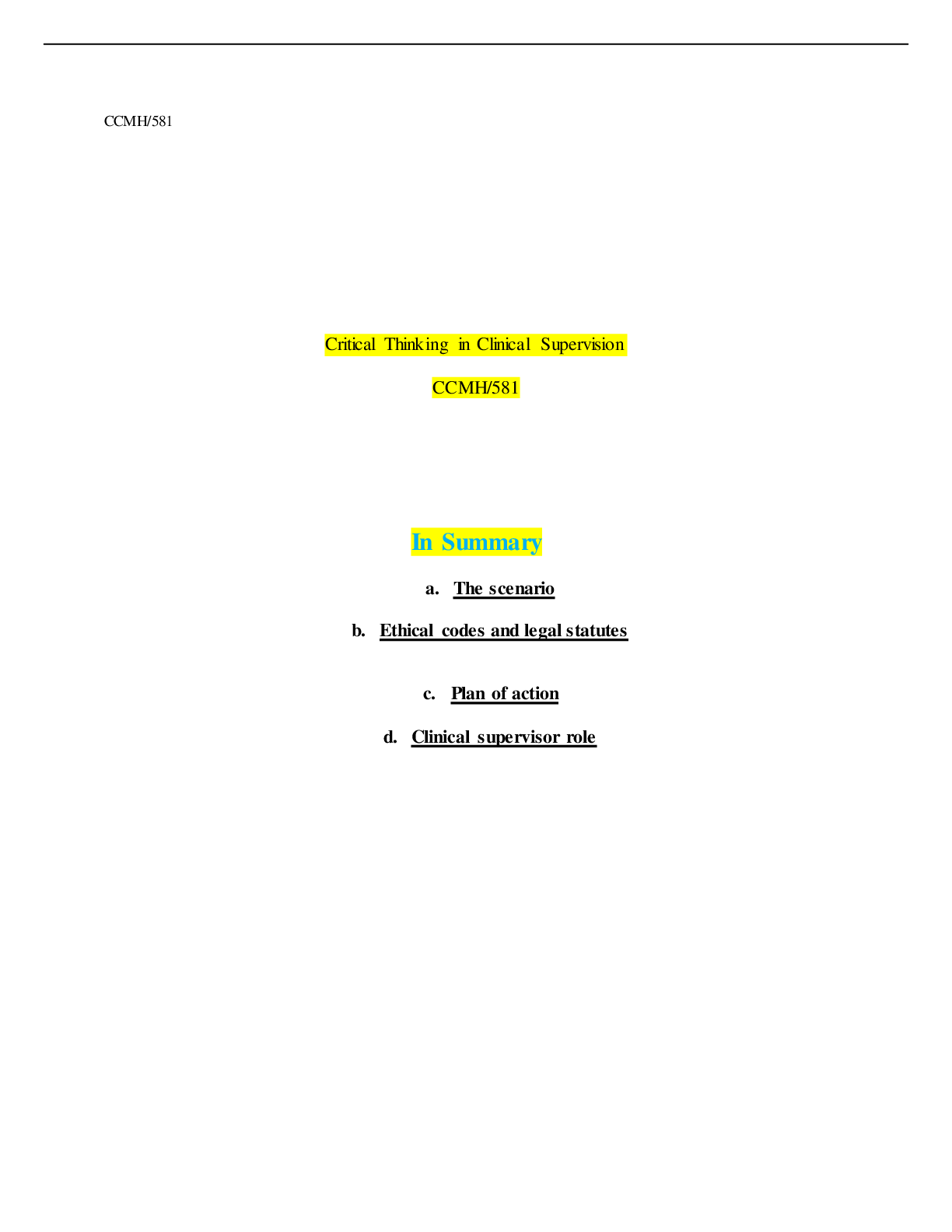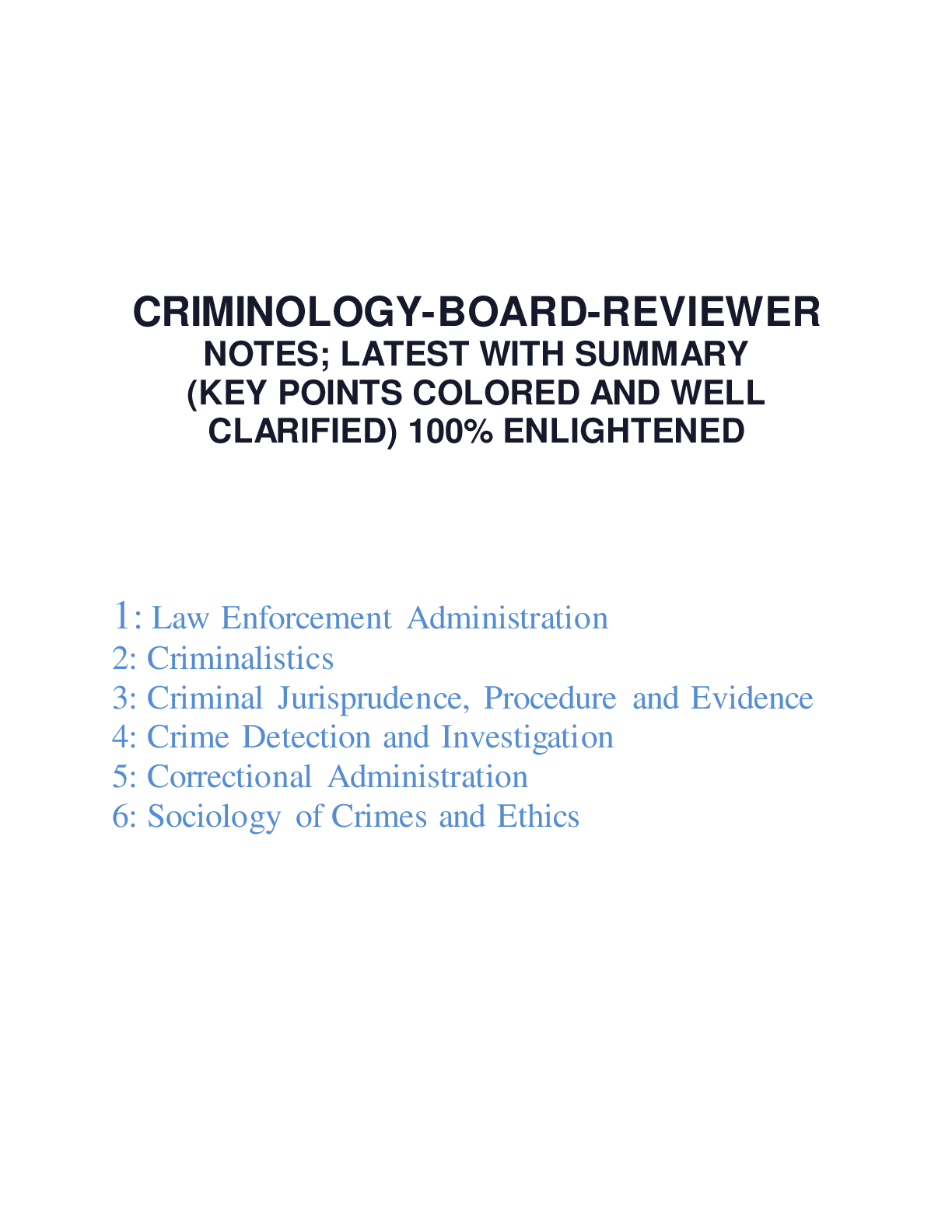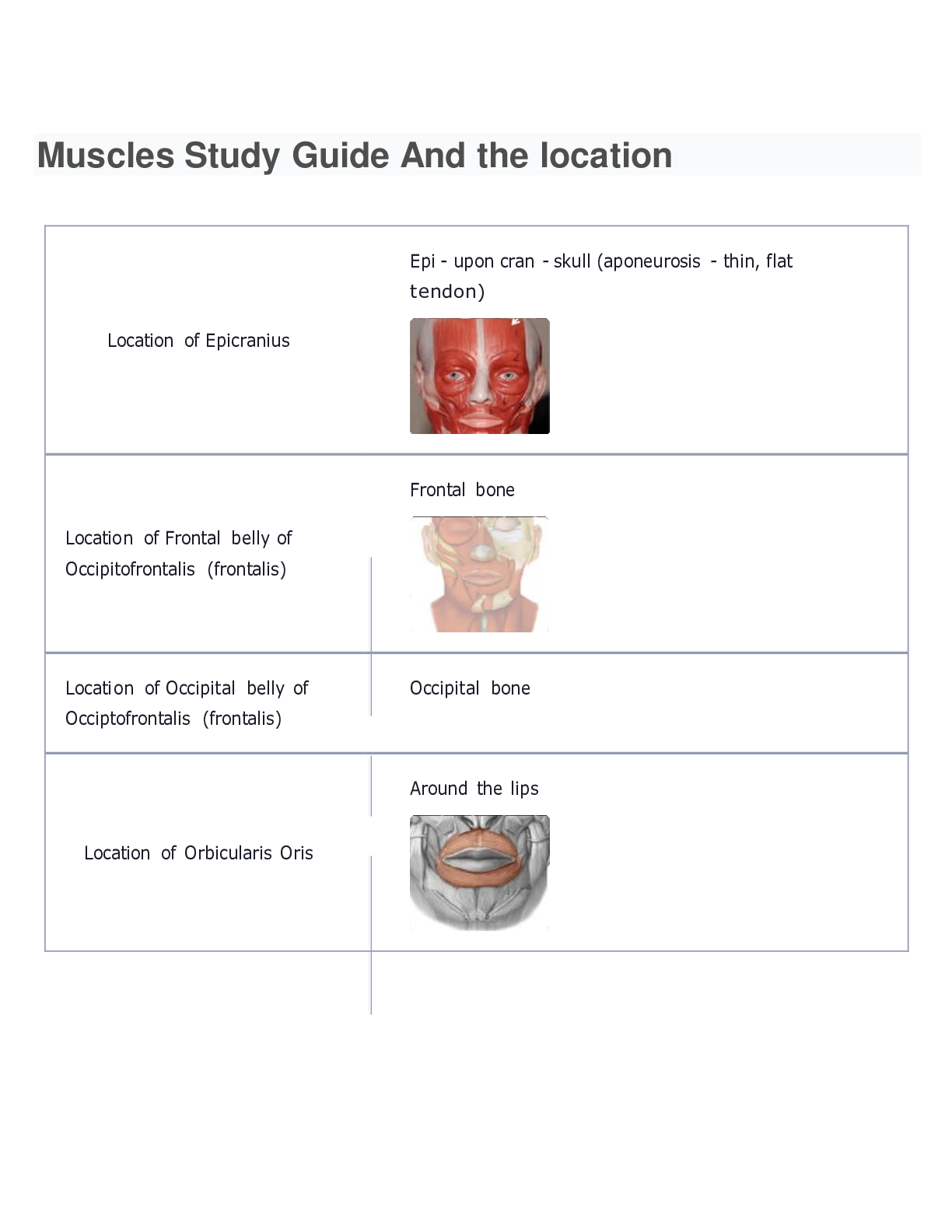Criminology > Summary > Criminology Exam 1 Questions and Correct Answers (+Definitions of key words) (All)
Criminology Exam 1 Questions and Correct Answers (+Definitions of key words)
Document Content and Description Below
Criminology Exam 1 Questions and Correct Answers (+Definitions of key words) DEFINITION CRIMINOLOGY-The scientific study of the nature, extent, cause, and control of criminal behavior. DEVIANT BEH... AVIOR-Actions that depart from the social norm. Some are considered criminal, others merely harmless aberrations. CRIMINAL JUSTICE-System made up of the agencies of social control, such as police departments, courts, and correctional institutions that handle criminal offenders. CRIMINOLOGICAL ENTERPRISE-The various subareas included within the scholarly discipline of criminology, which, taken as a whole, define the field of study. VALID MEASURE-Measure that actually measures what it purports to measure, measure that is factual. RELIABLE MEASURE-A measure that produces consistent results from one measurement to another. VICTIM PRECIPITATED HOMICIDE-Refers to those killings in which the victim is a direct, positive precipitator of the incident. WHITE COLLAR CRIME-Illegal acts that capitalize on a person's status in the marketplace. May include theft, embezzlement, etc. Question 1 Social disorganization theory states that as social disorganization in neighborhoods increase, crime rates increase. What type of relationship is expected between these two variables? Question 2 criminology sees crime as a product of free will and calls for stricter punishment to deter crime. Question 3 theories are set up to be falsified through the systematic collection of observable data. Question 4 criminology sees crime as determined by multiple causes and calls for attempts at turning people into law abiding citizens through rehabilitation. Question 5 In order to establish that one thing caused another thing a researcher must establish: Question 6 Researchers seek to falsify a theory in order to determine whether the observed facts fit with the assertions that the theory is making. Question 7 As long as a researcher establishes the fact that a probable relationship exists between two social phenomena, he/she can say that one of those phenomena caused the other. Question 8 Theories about the behavior of criminal laws seek to examine how some behaviors committed by one group of people are deemed criminal while the same behavior in another group of people is not. Question 9 Positivist criminologists believe strongly that crime is determined by forces both internal and external to the individual. Question 10 In order to say that X caused Y, it must first be established that X preceded Y. Question 1 Part I crimes include, homicide, rape, robbery, aggravated assault, burglary, motor vehicle theft, larceny, and . Question 2 When using UCR data, crime rates are generally expressed as the number of crimes per 100,000 members of the population Question 3 Using a standardized rate to talk about crime is important for making comparisons across geographic areas: Question 4 Which of the following cities in the Northeast/Mid-Atlantic region of the U.S. typically has the highest murder rate? Question 5 New York City is the safest large city in America, and among the safest in the world Question 6 In terms of geographic region, the highest rates of crime are traditionally found in the Northeast: Question 7 The UCR is a particularly well-suited data source for looking at the crime of rape. Question 8 According to the “murder by relationship” histogram in the expanded homicide data in 2015 handout, most murders are committed by: Question 9 In addressing the increases in murder and shootings in major U.S. cities such as Baltimore and St. Louis, from 2014 through 2016, former FBI Director James Comey and some in the media have referenced a “Ferguson effect.” Per the powerpoint, what is the “Ferguson effect?” Question 10 Murder rates from 2014-2016 have increased in 27 of 35 major U.S. cities. What city accounts for almost one-third of this increase? Question 1 Beccaria’s important work that has left a legacy for the modern-day criminal justice system is: Question 2 Beccaria’s concept or notion of is the bedrock of his theory and of modern-day deterrence theories. Question 3 In order for punishment to deter crime, Beccaria believed that it must be: Question 4 The predicts that more imprisonment will be associated with less crime. Question 5 According to Cohen and Felson's routine activities theory, in order for a crime to happen, there must be a convergence in time and place of: Question 6 Beccaria believed it was better to prevent crimes than worrying about what to do about it later. Question 7 Beccaria was in favor of capital punishment because he thought it deterred would-be criminals. Question 8 Celerity (swiftness of punishment) is a better predictor of deterrence than both certainty and severity. Question 9 Classical criminologists argue that the focus of public policies directed at doing something about crime should be the actor, and not the act itself. Question 10 The adversarial system of justice, such as that proposed by Beccaria in the 18th Century, argues that a person is innocent until the state proves him/her guilty. Question 1 Both and studies have attempted to measure the genetic link to criminality. Question 2 are chemicals that allow for transmission of electrical impulses within the brain and lower levels of these have been linked to antisocial personality disorder. Question 3 Sheldon noted that the was more likely engaging in criminal behavior than the other two body types. Question 4 The earliest biological theories emphasized as the distinguishing mark of the criminal Question 5 The contains neurons and systems that exist within the brain and spinal cord. Question 6 Lombroso extended the tradition of both physiognomy and phrenology by studying all anatomical features of the human body. Question 7 Research has shown that birth delivery complications has no effect on the child’s likelihood of displaying violent behaviors later in life. Question 8 Criminologists are discovering the importance of developing and testing bio-social theories of crime in order to take into account both biological causes of crime and environmental causes of crime. Question 9 One’s environment does not play a role in the development of antisocial personality disorder; it is entirely attributed to a genetic link. Question 10 A predisposition to engage in criminal behavior does not mean that a person actually will do so [Show More]
Last updated: 1 year ago
Preview 1 out of 21 pages
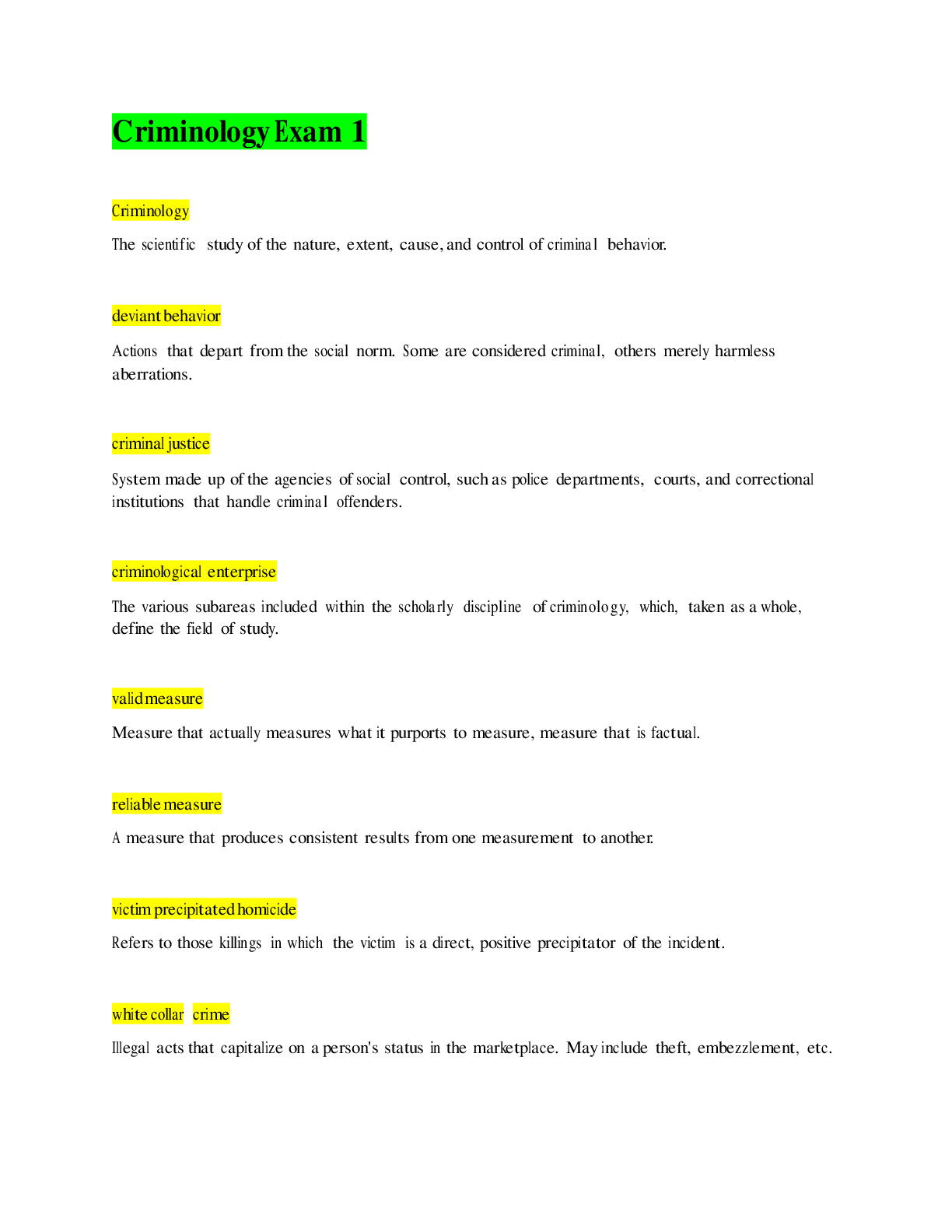
Buy this document to get the full access instantly
Instant Download Access after purchase
Add to cartInstant download
We Accept:

Reviews( 0 )
$7.00
Document information
Connected school, study & course
About the document
Uploaded On
Aug 21, 2022
Number of pages
21
Written in
Additional information
This document has been written for:
Uploaded
Aug 21, 2022
Downloads
0
Views
75



